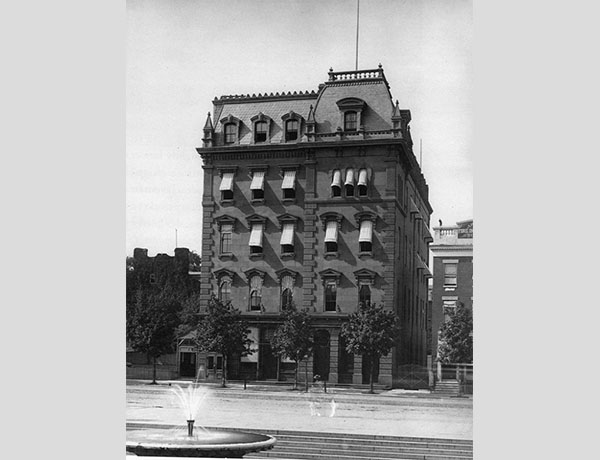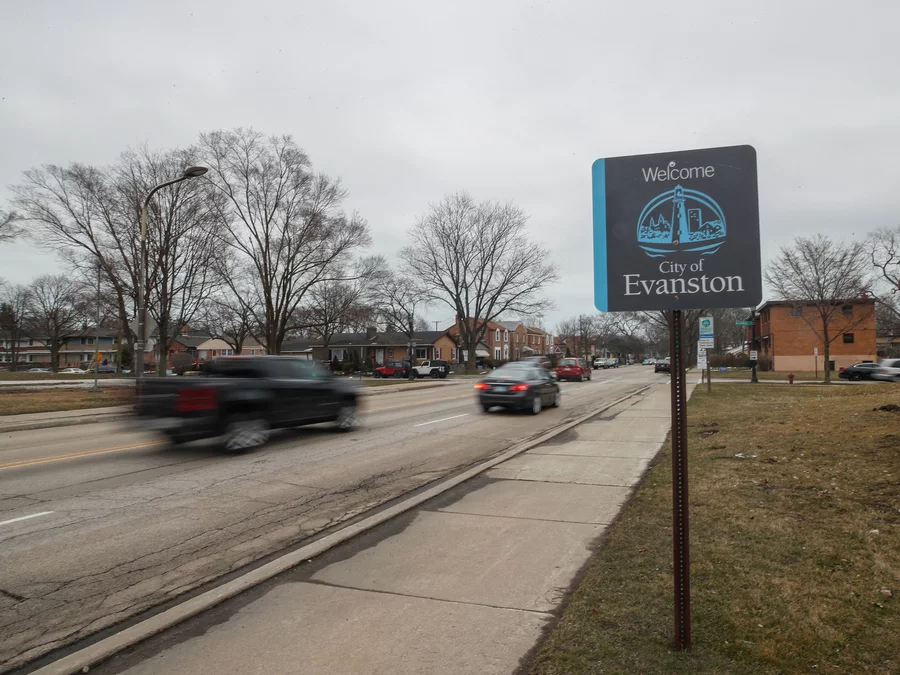Ava Duvernay’s documentary 13th brought public attention to the exception clause. Since its release, unfortunately change has come slowly – a grim reality not unforeseen by the documentary and summarized by investigative reporter Daniel Wagner: “One of the reasons it’s so difficult to talk about mass incarceration in this country, and to question it, is because it has become so heavily monetized.” The results of the 2022 midterm elections represent a long-awaited shift. Voters in Alabama, Oregon, Tennessee, and Vermont approved ballot measures to “change their state constitutions to prohibit slavery and involuntary servitude as punishment for crime.”
From private profits to state government savings, few entities do not see bumps in revenue from prison labor. Over the last few years, California state prison inmates have made headlines for being a “critical resource” in the fight against wildfires. The tradeoff? In some cases, “inmates earn $2 a day while in the camps and $1 an hour when out battling fires,” while the state saves $90-100 million a year in using their labor.
From private profits to state government savings, few entities do not see bumps in revenue from prison labor.
The prison industrial complex is a machine. Each piece works together to return incredible profits. Some states incentivize the use of already discounted prison labor by providing tax credits to employers who use said labor. In Louisiana, the state gives employers a tax credit of $2,400 for every “work release inmate” employed, leaving corporations to reap double the savings – savings on the discounted labor in addition to savings from the tax credit. A 2016 audit by the state concluded that 8,700 incarcerated persons were employed in work release programs, translating to $21 million in tax credits for employers. This kind of feedback loop does little to discourage incarceration, and why would it when employers are being rewarded for employing a “vulnerable population”?
Corporations that use prison labor are not the only ones that stand to gain. Increased revenue for corporations means increased demand for prisoners. Corporations that “provide services” to prisons walk away as the biggest winners. Securus and GTL are two communications companies that control over 70 percent of the prison call market – a $1.2 billion industry. Corizon health, the country’s largest prison health-care firm, has an average annual revenue of $1.4 billion.
![scales - Logo for The [F]law](https://theflaw.org/wp-content/uploads/2022/07/flaw_scale_divider.png)
The pattern of Black oppression and exploitation for the purposes of corporate profits is so concrete that it is hard to understand how it is still a present reality. But maybe, it is not that hard. Maybe Black oppression is so intertwined and essential to American Capitalism that a world without it is beyond imagination and too profitable to let go.
The truth is, with prison labor, our policy and practices have done a lot more to encourage its use than disincentivize the practice.
In 1619, the first slave ship arrived in the U.S. The importation of slaves continued until 1808 when Congress outlawed participation in the Trans-Atlantic slave trade. This law however far from marked the end of slavery in the U.S. After 1808, the domestic slave trade exploded. Companies like The Franklin & Armfield Co. emerged with the sole purpose of facilitating the domestic slave trade, profiting from slave trading and “slave stealing.” The practice of kidnapping free Blacks in the North to sell into slavery in the South was codified with the passage of the Fugitive Slave Act of 1850, and formally endorsed by the Supreme Court in Priggs v. Pennsylvania, which guaranteed the property interest of slave owners when slaves escaped to a free state.
The truth is, with prison labor, our policy and practices have done a lot more to encourage its use than disincentivize the practice.
U.S. history is full of similar paradoxes. The federal government deciding one thing is not ok, only to allow the same thing to continue in a parallel form.
When slavery was “abolished” in 1865 with the passage of the Thirteenth Amendment, the exception clause enabled convict labor to take its place. In 1890, only 25 years after the Thirteenth Amendment was ratified with this exception clause, the U.S. passed a law prohibiting the import of goods manufactured with convict labor. Meanwhile, the use of convict labor to produce goods domestically continued.
Over a century of loopholes created and closed to regulate the importing of goods made with forced labor – all while the use of forced labor continued domestically, in prisons across the country.
Then in 1930, Congress expanded upon this provision with Section 307 of the Tariff Act, which prohibited importing products “mined, produced, or manufactured wholly or in part by forced labor, including forced or indentured child labor.” Like the Thirteenth Amendment, Section 307 had its own loophole. The importing of goods made with forced labor was allowed if domestic consumer demand could not be met. This loophole remained in effect from 1930 to 2016, when finally, Congress passed a bill banning the importation of goods made with forced labor, regardless of domestic demand.
Over a century of loopholes created and closed to regulate the importing of goods made with forced labor – all while the use of forced labor continued domestically, in prisons across the country.
![scales - Logo for The [F]law](https://theflaw.org/wp-content/uploads/2022/07/flaw_scale_divider.png)
For centuries, while White-owned corporations have capitalized from Black labor, Black individuals and families have been excluded from meaningful wealth building opportunities and programs.
In 2019, White families had a median and mean wealth of $188,200 and $983,400, respectively. Black families? $24,100 and $142,500. This disparity is prevalent even among the wealthiest Americans: The 99th percentile Black family is worth a mere $1,574,000 while the 99th percentile White family is worth over $12 million. Across the income distribution, White households own seven times that of Black households.
Today’s racial wealth gap is the result of decades of policies that excluded Black Americans. As explained by researchers at the Brookings Institute:
Efforts by Black Americans to build wealth can be traced back throughout American history. But these efforts have been impeded in a host of ways, beginning with 246 years of chattel slavery and followed by Congressional mismanagement of the Freedman’s Savings Bank (which left 61,144 depositors with losses of nearly $3 million in 1874), the violent massacre decimating Tulsa’s Greenwood District in 1921 (a population of 10,000 that thrived as the epicenter of African American business and culture, commonly referred to as “Black Wall Street”), and discriminatory policies throughout the 20th century including the Jim Crow Era’s “Black Codes” strictly limiting opportunity in many southern states, the GI bill, the New Deal’s Fair Labor Standards Act’s exemption of domestic agricultural and service occupations, and redlining.

Credit: Office of the Comptroller of the Currency
For Black Americans inside the prison system, this wealth gap is only exacerbated. The U.S. criminal justice system is designed to strip defendants of their wealth at every turn. In Texas, a low-level offense conviction may come with a fine of up to $500; misdemeanors up to $2,000. In Massachusetts, monthly probation fees can exceed $1,000 over the duration of a sentence. North Carolina’s court system details a list of 52 separate fees. The fee for a routine DNA lab test is $600. Across the country, the average cost of a 15-minute call from jail is $5.74.
Incarcerated people are rarely offered opportunities to regain this lost wealth – a reality hardened by the Thirteenth Amendment.
The racial wealth gap is so significant that many see reparations as the one solution that would serve as both an appropriate response to the decades of harm that Black Americans have endured and as an effective tool for reducing this persistent disparity.
![scales - Logo for The [F]law](https://theflaw.org/wp-content/uploads/2022/07/flaw_scale_divider.png)
There is a long history in the U.S. of using restitution and reparations as a means of remedying harm. In 1711, a Massachusetts’s colony passed a bill that granted £600 in restitution to the heirs of the victims of the Salem Witch Trials. At the end of the century, Massachusetts again awarded reparations – this time to a formerly enslaved Black woman by the name of Belinda Sutton. Belinda bravely petitioned the Massachusetts legislature, requesting reparations for the suffering endured in bondage and value of her labor. The legislature granted her request and awarded her an annual pension drawn from the estate of her former owner.
To date, the federal government has not granted reparations to African Americans or American Descendants of Slavery.
Other examples followed in later centuries. Native Americans were granted restitution for past wrongdoings including treaty violations and duress-induced land theft. It is estimated that since 1946, the U.S. government has disbursed $800 million to Indian Tribes, a pittance compared to what they are actually owed. Following the internment of Japanese Americans during WWII, the U.S. attempted to make amends, first, with a Congressional Appropriation of $38 million to settle 23,000 claims for economic losses endured. Then in 1988, Congress passed the Civil Liberties Act which acknowledged the internment as a “fundamental injustice” and paid reparations of $20,000 to those who had been interned.
These examples are not included to excuse, pardon, or endorse the federal government’s response to its wrongdoings throughout history. They are included to demonstrate a precedent for reparative action. To date, the federal government has not granted reparations to African Americans or American Descendants of Slavery.
Inspired by the passage of the Civil Liberties Act, the late Congressman John Conyers introduced H.R. 40: Commission to Study and Develop Reparations in 1989. The bill did not outline a specific reparations program. Rather, if passed, the bill would appropriate $20 million to support a commission that would assess the feasibility of reparations proposals before offering a formal recommendation.
The bill did not pass the year it was introduced. Conyers went on to introduce the bill every subsequent year that he was in office. Conyers resigned in 2017.
After Conyers resigned, Representative Sheila Jackson took over the cause and has introduced the bill every year since. While the bill currently has nearly 200 co-sponsors, it has yet to make it to a floor vote. In January 2023, Representative Jackson re-introduced H.R. 40. Meanwhile, Senator Corey Booker introduced S.40, the bill’s senate companion. Over 190 organizations have endorsed the legislation.
California recently established its own task force – the first state-wide initiative of its kind in the country. The task force is set to release its final recommendations in July 2023.
The resistance to H.R. 40 speaks to the broader resistance of reparations efforts – a resistance present on both sides of the aisle. Some of those who resist are concerned that the “wrong” set of people will be forced to pay – a sentiment expressed by Ohio representative Jim Jordan during a prior hearing on the bill: “Spend $20 million for a commission that’s already decided to take money from people who were never involved in the evil of slavery and give it to people who were never subject to the evil of slavery.” Others have claimed that the effort is untimely, for example, dismissing H.R. 40 given “more pressing” concerns like COVID-19.
While H.R. 40 sits unmoving from year to year, reparations advocates outside the halls of Congress have tried to get around federal roadblocks by exploring other vehicles for reparations. Proposed non-legislative solutions include everything from perpetrator-focused atonement models that center restorative justice to reparations as takings clause claims that recognize a property interest in self-ownership and need to compensate slaves for stolen property.
Around the turn of the 21st century, litigation efforts picked up steam – all to no avail. Lawsuits brought against Aetna and the Lehman Brothers failed for lack of standing. Another lawsuit, filed in 2003 by esteemed civil rights attorney Charles J. Ogletree Jr., sought reparations for the victims of the Tulsa, Oklahoma riots. The suit died when the 10th Circuit ruled that the statute of limitations had passed. The Supreme Court denied cert.
![scales - Logo for The [F]law](https://theflaw.org/wp-content/uploads/2022/07/flaw_scale_divider.png)
“The past is the past.” “People shouldn’t have to pay for something they didn’t do.” “The problem is too big and too expensive.” The reasons for stalling reparations are endless – regularly thwarted by trying to figure out who should pay and how much. Many are willing to let the moral imperative be derailed by revenue concerns. Which begs the question, how could reparations be funded at scale?
When the government decides it needs to fund a program, it can do so in a few ways – raising taxes, decreasing spending on other expenditures, reallocating funds – usually never in isolation but in combination. A tax as a part of this combination has appeal for multiple reasons.
For one, using some form of tax to fund reparations is not a novel concept. The most recent example of a tax for reparations can be found in Evanston, Illinois. Evanston became the first city in the U.S. to get a tax proposal off the ground, making reparations available with funding collected from a sales tax on recreational marijuana. The three percent gross marijuana tax is set to contribute to a $10 million fund which will be used to provide grants of up to $25,000 to qualifying “Ancestors” who would like to buy a home or make home improvements.

Kamil Krzaczynski/AFP via Getty Images
Researchers at the Tax Policy Center have explored wealth-based tax models like increasing the tax rate of the top 0.1 percent of the wealth distribution. But this and similar proposals run into the many identity-based roadblocks that have plagued reparations advocacy for so long.
A corporate tax seemingly avoids these challenges by removing individual liability from the equation. As prior litigation attempted to do, a corporate tax would shift the burden from individuals to entities that have long profited from slavery and Black labor.
![scales - Logo for The [F]law](https://theflaw.org/wp-content/uploads/2022/07/flaw_scale_divider.png)
I had always been drawn to the idea funding reparations via a corporate tax. I didn’t expect this idea to be grossly impractical. In my initial brainstorm, I overlooked a significant, some would say obvious, detail: our tax system is not built to maximize corporate tax revenue collection. It is largely built for the benefit of corporations – in acquiescence of their priorities.
For the sake of my argument, I am going to assume you, the reader, know little about our existing corporate tax structure. If you do, I applaud you – and hope you stick with me through this primer.
Corporations are taxed mainly in one of two ways: 1) federal and state corporate income taxes and 2) excise taxes. Within these buckets are subsets of taxes that vary depending on the kind of corporation being taxed.
The federal corporate income tax is the corporate tax that generates the most revenue. This tax is levied on C-corporations, which make up only 5 percent of all corporations.
The 95 percent of corporations that aren’t C-corps are “pass-through” entities, also known as “S-corporations” or “sole proprietorships.” S-corps are not subject to the corporate income tax. Instead, profits are considered that of the owner and are subject to the individual income tax.
However, the 5 percent that pay the federal corporate tax consist of the largest corporations in the country. In 2021, the tax generated approximately $372 billion.
Here’s the thing about corporate taxes though: all numbers are relative. Regardless of whether $372 billion seems larger or smaller than you’d expect it to be, it’s important to understand that this number should be larger.
In 2017, the Tax Cuts and Jobs Act decreased the federal corporate income tax rate from 35 percent to 21 percent – its lowest rate since the tax was introduced in 1909. Since 1945, the share of federal tax revenue that comes from the corporate income tax has been shrinking. In 2019, only 7 percent of the federal government’s $4.4 trillion came from corporate income tax revenue.
This reality is hard to square with the fact that corporations have been making a killing. 2021 was the most profitable year for U.S. companies since 1950. Our tax code is doing a lot of work to protect these profits.
The problem is deeper than the slashed tax rate. The tax code has been so riddled with loopholes that for many companies, the tax rate has been virtually nonexistent. According to the Institute on Taxation and Economic Policy, at least 55 corporations paid $0 in taxes in 2020. FedEx, Nike, AT&T – all have reported no federal income in recent years. Those not paying $0 are paying significantly less than the 21 percent tax rate. The corporations mentioned at the beginning of this piece? In 2021, Wells Fargo had an effective tax rate of 8.9 percent. Bank of America? 2.7 percent.
Corporations limit their tax liability in a few different ways. Shifting profits offshore is a common strategy made particularly lucrative by the Tax Cuts and Jobs Act. Companies who hold tangible assets abroad get a 10 percent deduction on overseas assets. Since 2015, U.S. companies have held anywhere from $2.1-.6 trillion in offshore profits. One study found that if taxed, corporations would owe $700 billion on these profits.
The other thing I should have assumed but failed to predict in my initial brainstorm? This aversion to income taxes is deeply rooted in history – and unsurprisingly, also intertwined with slavery. The federal government built its tax code on the backs of the enslaved. The U.S. economy was long dependent on “politically palatable” import and export taxes, fueled by cotton and sugar production. By the time the federal government acquired what was and remains the broad power to “lay and collect taxes” under the Sixteenth Amendment, little had changed on the income tax front. Unlike other developed nations, the U.S. never fully embraced an income tax because in relying on import and export taxes, it did not have to.
The federal government built its tax code on the backs of the enslaved.
The federal government recently took measures to reduce the effects of corporate tax avoidance. In August 2022, President Biden signed the Inflation Reduction Act of 2022, which included a new corporate tax. According to the Washington Post, the tax requires companies with at least $1 billion in income to calculate their annual tax liability either by using longstanding tax accounting methods, which is 21% of profits less deductions and credits, or by applying a minimum 15 percent rate to the earnings they report to shareholders on their financial statements. This corrective measure is just one step in acknowledging that corporations should be responsible for paying their fair share in taxes. However, it’s hard to say what the actual impact will be. When presented with a tax, corporations will do what they can to find new ways to reduce or avoid the “obligation.”
Excise taxes, taxes imposed on the sale of specific goods, services, or activities, offer more promise. Excise taxes are often motivated by the need to correct individual or corporate activity that presents a negative externality on the public.
A particularly notable example is the excise tax on coal, a tax imposed on U.S.-based producers of coal. The excise tax on coal is used to fund the Black Lung Disability Trust Fund, which offers financial assistance for health care costs incurred from mining-induced illnesses.
Other examples of excise taxes include the “Oil Spill Liability Tax” and a tax on the use of “Ozone-Depleting Chemicals (OCDs)” – taxes imposed on manufacturers who use crude oil or OCDs, respectively.
These excise tax models could be replicated for the purpose of funding reparations. Congress could pass legislation that would impose an excise tax on companies that have ties to slavery and/or actively use prison labor. Revenue from this tax could then be appropriated to a reparations fund.
When Congresswoman Alma Adams introduced legislation to extend the Black Lung Disability Trust Fund, she was quoted saying, “Coal operators and their Wall Street creditors are gaming the system, while miners face an uncertain future and American taxpayers foot the bill.”
The same could be said about the need for reparations. Corporations and their Wall Street creditors have gamed the system, exploiting free or cheap Black labor, while Black individuals and families, over decades, have faced an uncertain future – impacting all American taxpayers.
![scales - Logo for The [F]law](https://theflaw.org/wp-content/uploads/2022/07/flaw_scale_divider.png)
In 2020, following the murder of George Floyd and the protests held in response throughout the summer, corporations across the country scrambled to demonstrate some “commitment” to Black lives. JP Morgan Chase announced a $30 billion investment in racial equity efforts. Other banks made similar commitments. Some companies pledged to increase the racial diversity of their workforces, particularly within their boardrooms and C-suites.
These commitments barely scratched the surface of a problem that had been rooting for centuries. In many cases, the commitments only highlighted the hypocrisy at play. With one hand corporations extended grandiose commitments; with the other, they continued to perpetuate discriminatory patterns and practices. Amalgamated Bank, a union-owned bank, was the first –and so far, only – financial institution to come out in support of H.R. 40.
![scales - Logo for The [F]law](https://theflaw.org/wp-content/uploads/2022/07/flaw_scale_divider.png)
History shows that corporations have a role to play funding reparations. Whether they fulfill that role will depend on whether they are willing to relinquish profit. Today, corporations are protected from doing so. In court rooms across the country, corporations are protected by procedure. At tax time, they are protected by regulations, or a lack thereof. To relinquish corporate profits for reparations would break tradition in favor of justice and equality. The day they do will mark a farewell to American Capitalism as we know it.
![]()
![]()










